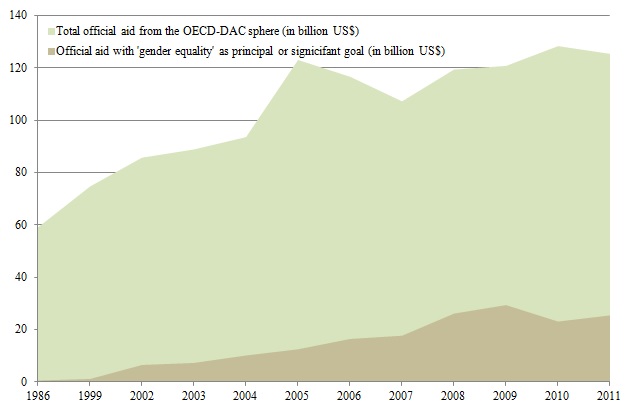dimanche, 01 mars 2015
Gender Gaga
00:05 Publié dans Livre, Livre, Sociologie | Lien permanent | Commentaires (0) | Tags : livre, gender, gender studies, moeurs contemporaines, sociologie |  |
|  del.icio.us |
del.icio.us |  |
|  Digg |
Digg | ![]() Facebook
Facebook
dimanche, 18 mai 2014
21 mai : manifestation contre le gender à Lyon
00:05 Publié dans Actualité, Evénement | Lien permanent | Commentaires (0) | Tags : lyon, actualité, événement, france, europe, affaires européennes, gender, stop gender |  |
|  del.icio.us |
del.icio.us |  |
|  Digg |
Digg | ![]() Facebook
Facebook
samedi, 23 novembre 2013
Conférence sur le gender à Issy-les-Moulineaux
00:05 Publié dans Actualité, Evénement | Lien permanent | Commentaires (0) | Tags : événerment, gender, gender theory |  |
|  del.icio.us |
del.icio.us |  |
|  Digg |
Digg | ![]() Facebook
Facebook
lundi, 17 juin 2013
The “Gender Industry” — Controlling the Periphery
The “Gender Industry” — Controlling the Periphery
Ex: http://www.fairobserver.com/
 More than contributing to just and humane societies, the international gender industry, feminism’s institutionalized offshoot, has undeniably become part of multi-faceted attempts at periphery control.
More than contributing to just and humane societies, the international gender industry, feminism’s institutionalized offshoot, has undeniably become part of multi-faceted attempts at periphery control.
Just like threats and enemies often don’t turn out to be who we are told or believe them to be, measures and movements with an apparently noble and humanist purpose do not always serve it. Draconic laws against “hate speech” and “extremism,” for instance, are perhaps not as much about promoting tolerance or stopping evil white supremacists and evil Salafists as the public is told. The latter groups rather serve as mediagenic scarecrows, the threat of which serves to legitimize a set of laws, policies and control organs that are set up for the purpose of intimidating or silencing all forms of effective dissent against the neoliberal order in the future. Likewise, tightened gun-control laws are not in place for the protection of ordinary citizens, but rather represent attempts by the power elites to curb the circulation of firearms that could, one day, be turned against them as the cropped-up frustration, bitterness and despair that ferment at the grassroots level, explode.
Orwellian doublethink and newspeak have never been as lavishly used as under the neoliberal hegemony that arose after the demise of the Cold War and the bipolar world order. Now, the same paradox applies to feminism and its more comprehensive and slick spin-off and alibi, gender. Much can be traced back to so-called “second-wave feminism,” a movement that originated among upper-middle class and elite women in northwestern Europe and in the US between 1965-75. Its major aims were the financial independence for women through their full integration into the labor market, and the so-called “sexual liberation.” There is no doubt that the movement initially addressed real inequalities, abuses and hypocrisies. Yet, it lost part of its moral superiority once it became an instrument of ingraining a neoliberal world order – a dehumanizing system in which all aspects of life have to become marketable, with everyone and everything as merchandise, subordinate to oligarchic and cosmopolitan financial elites — in the deepest fabric of society. How did this happen?
Is Freedom Slavery?
Let us look at its actual legacy in the countries' societies where it started: that is the OECD sphere, and northwestern Europe and the US in particular. If one makes abstraction of the rhetoric about emancipation, progress, equal opportunity and freedom of choice, which have been truly or allegedly obtained, one sees that over the last decades men and women in the OECD sphere’s core societies have reached almost complete equality — that is, in the first place, as consumers and taxable subjects. It’s important to emphasize this; for the upgrading of women to fully-fledged laborers, consumers and taxpayers was the actual purpose of the establishment’s recuperation of feminism, or at least a number of its issues. In terms of marketization of society, the so-called sexual liberation also came into practice as the full incorporation of the sexual mores of the left-libertarian protest subcultures from the 1965-75 period, into marketing and mass consumerism. But perhaps the most important is this: the steered vilification and destruction of the core family and the clan as the cornerstones of a natural societal order, and the power struggle and hostility between the sexes that is being constantly incited by lifestyle magazines, reality TV, women’s organizations, social workers and lawyers, has proven to be an ultimate divide-and-rule tactic.
Perhaps it's somewhat bluntly put. But let’s stick to the essentials. The fragmentation and mutation of the social fabric also came to serve a major purpose of ensuring ideological continuity, in the sense that corporate media, subsidized pedagogues and all sorts of therapists became major players in the education and acculturation of children and young adults instead of the family. At a loss because of the breakup of the family structure and degradation of the father figure, they become much easier to indoctrinate with the systemic values and norms through the said channels. Finally, in terms of society control, the promotion of feminization and metro-sexuality among boys and men through media and commercials is to dilute the physical and psychological capacity for effective rebellion and revolution against the order of things. The oligarchy has understood all too well that the physical input on the streets during turmoil and revolutions have always primarily been carried out by men.
So, one starts to wonder whether it’s really about creating a more soft and gentle society, or, rather, a submissive one that lives an illusion of freedom and equality. More recently, the gender sector went further with the promotion of gay rights, which after a while have become rights of “sexual minorities” in international policy discourse. On the whole it looks like in some way, feminism and the gender sector eventually came to serve the oppression that they pretend to fight. Is it this that the thousands of well-intended feminists and gender activists wanted? Most probably not. The thing is, that their movements, and real and perceived achievements, were recuperated by a system, the nature of which they failed to understand — at least in time. But on the other hand, feminism’s recuperation into a tool for the neoliberal oligarchy was only possible because part of the feminist elites understood that they could make careers on this, especially once the baby boomers and soixante-huitards, who propagated second-wave feminism, found their way into the upper echelons of national politics and international institutions.
The Wrath of the Peripheries
For sober minds, it had been clear for a long time now that resistance against, and alternatives to, neo-liberalism would not come from the secular Lefts. As Oswald Spengler rightly said at the time – and as the former Socialist sphere in the 1990s as well as the devolution of European social-democrats illustrate – every “outbreak” of Socialism creates new paths for capitalism. Neither can much be expected from established democratic structures and actors, because these have been largely reduced to entertainment and periodic political rituals that do not affect the real powers that be. Instead, the resistance and alternatives come and will continue to come from the internal and global peripheries and from emerging powers. They will be grafted in existing or re-composed solidarity groups, existing or born-again forms of traditionalism, and religion. Depending on the society and the geographic sphere, the latter particularly includes Islam, Christianity, and perhaps neo-paganism.
Even within the OECD sphere itself, remnants of traditional structures and religion might one day prove vital for the survival of individuals and for the recomposing of societies once the current order implodes, as it sooner or later will. Therefore, these have to be discredited and discarded so that no alternatives can form, or that they can be marginalized where they exist. What the protagonists and agents of global neoliberal hegemony especially fear is that emerging powers and traditionalist and non-secular resistance movements will somehow find a common cause. Furthermore, similar to what took place in the OECD sphere, the global consumers’ base has to be expanded so that the economic system can extend its survival. This means that collective identities, norms and values that form an impediment to the transformation of the peripheries’ societies into fully-fledged consumer bases, have to be dealt with. And this is where the gender industry, amongst others, comes in. So, what it essentially comes to, is that the process of social fragmentation of feminism’s original turf has to be propagated and grafted in the internal periphery – that is, the non-Western and in particular Muslim immigrants in the OECD sphere – as well as in the global periphery and, here again, with particular attention to its Islamic sectors. This also includes the exportation of the sexual minorities agenda.
A major channel of what is definitely becoming gender imperialism is international development aid. The use of aid to transform peripheral societies and gain some control over them in the process has been conceptualized by authors like Mark Duffield, amongst others. The following figure offers a concrete look at what aid for the promotion of gender equality and women’s empowerment as a principal or significant goal, represent in the overall aid volume from the OECD sphere, and how it evolved over time. These figures only reflect reported official aid. If one adds the activities where gender equality is an implicit and not a major goal, as well as the contributions from private donors, the portion of such aid is likely to be higher. Nonetheless, if we look at the timeline, we see that aid related to gender systematically increased after 1999, and especially from 2002 onwards. This is no coincidence. For a start, gender equality was streamlined and integrated as a priority development goal at a number of global summits under UN aegis between 1995 and 2000. More importantly, there was the shifting geopolitical paradigm. Earlier, the “opening” of the former Socialist societies in Eastern Europe, the Balkans and Eurasia had already created a real or hoped-for space for “social reconstruction” along neoliberal lines. The rapid impoverishment and the social and moral dislocation that these societies went through in the early 1990s created opportunities for the international gender industry too. Officially there to save women from degradation and exploitation, its task, in fact, was to help prevent any return or rehabilitation of traditionalist and non-secular alternatives to defunct Socialism.
Aid as “Social Software”
Things gained momentum, however, with the official start of what we know as the “Global War on Terror” in late 2001 and early 2002. Of course, this multi-dimensional war did not start out of the blue. It was rather the outcome of an older security focus shift towards the Islamic sphere that was already clear during the First Gulf War in 1990-91 — the one following Saddam Hussein’s occupation of Kuwait. After the overt start of the current phase of the war on terror in 2001-02, however, one observes a strong and systematic increase of gender aid. So now, on average, we are talking about $17.6 billion of official gender aid per annum since 2002. Contrary to what some may think, the bulk of this, about three quarters in the 2008-11 period for instance, did not come from the US but from EU institutions — especially from the major EU member states. This suggests some sort of task division in which the US provides the bulk of the military muscle for neo-imperial intervention, while the more effeminate EU brings the social software to transform societies. Country-wise, much of the gender-related aid, both proportional or in absolute terms, is destined for, hardly surprising, majority Muslim societies that are the frontlines in the war on terror (flagship context being of course Afghanistan, Yemen, Iraq, Pakistan and, more recently, Mali and Indonesia).
There’s also India and China, and a number of African countries that are categorized as fragile states or where assertive Christian movements exist. Interestingly, the top recipients also include Vietnam, a nominally socialist country and onetime anti-imperialist bulwark, but that has now apparently become a champion of sexual minority rights. It is, of course, wrong to look at the whole gender industry as a centralized, uniform sector bound by global sisterhood and solidarity. It is rather a realm of numerous specialized international institutions, international as well as local non-governmental organizations, consulting firms, platforms and egos that are permanently in competition with each other for a piece of the donor funding pie, career opportunities and their own continuity, and in which “oppressed women” eventually serve as a backdrop. This competition and divisions, which is one of the reasons why the sector will eventually fail in its objectives, will most likely increase when funding shrinks if the economic crisis in the OECD sphere lasts or worsens. In the field, however, common traits and ways of operating can be observed. First, the whole effort is largely elite-driven. Just like the West-African slave trade and early European colonialism in India, for instance, could never have been organized without the active and interested support of native notability and merchant princes, neo-liberal hegemony, and the gender industry that has to help anchor it in the social fabric, have to rely on local elite groups and, of course, their interests.
These elite groups form much of the gender industry’s local staff and the leadership of local women’s movements. Being composed of members of more cosmopolitan, westernized segments of society, secularists, yuppies, artistic milieus and more opportunistic officials, they understand very well the profitability of acting as subcontractors in donor agendas. Most often, however, they do not reflect what lives and moves in wider society, which they often fear and despise for its perceived “backwardness.” The twisted and socially prejudiced assessment of the gender situation that this often brings, reflects a deep social divide between the elites, the grassroots and the socially mobile. What was striking to me, for example, during the whole outrage around the Delhi rape case earlier this year, when elite feminists – of the kind that treat their domestic servants like rubbish after coming home from the umpteenth human rights seminar – skipped no opportunity to blame “the backward traditionalism of the masses” for the increase in rape cases. Typically, hardly anyone in those circles even suggested that the rapid spread of the liberal virtue of pornography could, maybe, be a far more important cause.
Stop Pretending
Second, one can observe a clear tendency of focusing on extreme, if not marginal, situations and incidents of which women fall victim, in order to almost demonize, in cooperation with system pundits craving for sensation, the male and traditionalist sections of society — if not entire countries. Of course, with some martyr babes and a tearjerker or two thrown in, it gives the international visibility and legitimacy that is needed for funding. But, more essentially, it feeds a latent narrative in which men are uniformly depicted as oppressive, violent, lazy and irresponsible. And this has to serve, indeed, the same divide-and-rule tactic, which is to set the sexes up against each other. In reality, however, between the elite feminists and the libertine jet set women on one hand, and the women who are victim of spectacular, brutal abuses on the other, there exists a wide and diverse societal middle ground in which men and women, as good and as bad as it gets for everyone, do have a mature modus vivendi in a daily environment that is defined both by tradition and globalization. But hardly anyone seems interested in this. For one, there’s much less spectacular misery to see and sell.
But the existence of this silent, yet living, majority underlines something much more important. Just like the left-wing students with upper-middle class backgrounds in the Western Europe of 1965-75 — who went to the factories to spread the gospel of proletarian revolution and encountered indifference, if not outright hostility, from the very workers that they wanted to “emancipate” — privileged feminists and gender professionals are as baffled when they finally realize that the bulk of, say, Arab, Afghan and African women that they want to “save” and “enlighten” are maybe all but waiting for that. And that is at once the other reason why the gender strategy could eventually fail.
Before anyone thinks this is outrageous or preposterous, lay assured that I understand such criticisms. There used to be a time, quite some years ago already, that yours truly bought into all this as well: after all, who could be against protecting and liberating women from abuse, exploitation and discrimination? The thing is, when you work in different spheres and societies long enough and when you have eyes and ears, you realize at a certain moment that one has to be either malevolent or a stubborn idealist not to grasp that the beautiful discourse and slick slogans do not entirely reflect reality. And that reality is when one comes to see where the roads paved with good intentions can at times lead to.
00:05 Publié dans Sociologie | Lien permanent | Commentaires (0) | Tags : sociologie, sexualité, gender studies, gender |  |
|  del.icio.us |
del.icio.us |  |
|  Digg |
Digg | ![]() Facebook
Facebook
mardi, 04 juin 2013
Aux origines de la théorie du «gender»

Il n’y a rien de nouveau sous le soleil!
Michel Maffesoli


Michel Maffesoli
00:05 Publié dans Philosophie, Sociologie | Lien permanent | Commentaires (0) | Tags : sociologie, michel maffesoli, gender, gender studies, philosophie, actualité, france |  |
|  del.icio.us |
del.icio.us |  |
|  Digg |
Digg | ![]() Facebook
Facebook





